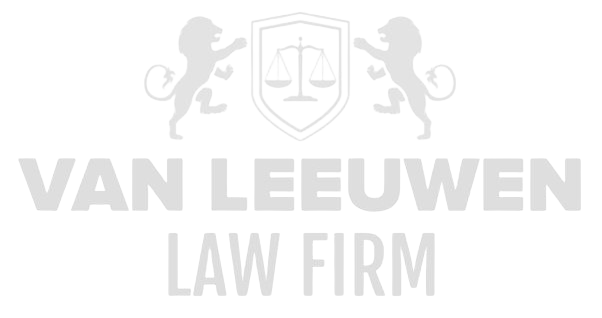In a global market characterized by an unprecedented escalation in regulatory pressure, enterprises are increasingly confronted with a complex and deeply interconnected framework of obligations, supervisory mechanisms and enforcement priorities. This reality is amplified by a notable shift among supervisory authorities toward a more assertive, intervention-oriented approach, marked by enhanced cross-border cooperation, strengthened information-exchange mechanisms and a growing reliance on joint investigations. As a result, a legal landscape has emerged in which organizations can no longer rely solely on domestic compliance structures, but must instead anticipate extraterritorial impact, multilateral enforcement initiatives and potential friction between divergent legal systems. This significantly heightens the need for organizations to reassess foundational policies, governance models and monitoring processes, particularly in sectors where data flows, international contract chains and complex supply-chain ecosystems play a central role.
Simultaneously, the strategic necessity of a coherent, global approach to risk identification and compliance is reinforced by accelerating digitalization, heightened geopolitical uncertainty and the increasing interconnection between economic interests, legal obligations and reputational considerations. Regulatory regimes that traditionally operated in isolation—such as privacy law, competition law, financial supervisory rules, export control and sanctions law—show a rapidly strengthening degree of cross-pollination, with the consequence that decisions taken within one legal domain may generate immediate implications in others. This requires a comprehensive, legally robust, meticulously documented and strategically embedded approach in which policymaking, operational decision-making and crisis response are aligned across international operations. In this context, a structured, multidimensional and proactive cross-border compliance strategy is no longer optional, but an essential foundation for sustainable business conduct.
Identifying Extraterritorial Exposure in Key Markets
A thorough assessment of extraterritorial exposure demands a deep analysis of how specific legal systems apply jurisdictional principles that extend beyond traditional territorial boundaries. These include economic-nexus tests, data-driven jurisdictional criteria, market-facing interpretative rules and enforcement strategies specifically designed to bring foreign entities within the reach of national regulation. Organizations must carefully evaluate which activities, contractual structures, technologies and data-processing operations fall within the scope of such extraterritorial provisions, including situations in which supervisory authorities assert jurisdiction based on minimal or indirect activities within their territory. In sectors where digital infrastructures and international distribution models are predominant, this analysis becomes increasingly complex, as cross-border data flows, cloud architectures and outsourced services directly influence extraterritorial exposure.
Moreover, it is essential to evaluate in detail how authorities actually enforce extraterritorial jurisdiction. Many regulators apply a risk- and impact-based model, prioritizing entities operating in critical sectors, processing substantial volumes of data or generating significant market influence. The assessment must therefore consider not only statutory jurisdictional provisions, but also empirical enforcement patterns, supervisory cooperation frameworks and the degree to which authorities engage in cross-border information sharing. Particularly in domains where data protection, competition law, export control and financial regulation intersect, this results in a complex web of potential exposure that must be continuously categorized, prioritized and updated.
Special attention must also be paid to indirect exposure, which arises when affiliated entities, service providers or strategic partners in other jurisdictions are compelled to disclose information or undergo supervisory measures that indirectly affect the organization itself. The concept of exposure must be interpreted broadly: it encompasses not only legal risks, but also operational implications, compliance costs, supply-chain continuity risks and reputational impacts. In an era in which supervisory authorities increasingly seek access to digital infrastructures, audit logs, data-mapping documentation and risk assessments, an extraterritorial analysis must be embedded within both strategic and operational decision-making processes.
Aligning Internal Policies with International Best Practices
Aligning internal policy frameworks with international best practices requires a systematic approach whereby existing governance structures are benchmarked against leading normative frameworks, regulatory guidance and soft-law instruments. It is insufficient to rely solely on minimum requirements under local legislation; organizations must align their policies with widely recognized standards applied globally by regulators, multinational enterprises and sector-specific institutions. Internal policies must be structured in a manner that allows scalability across jurisdictions, taking into account both statutory requirements and interpretative expectations of supervisory authorities. This necessitates consistent, future-proof and evidence-based documentation in which compliance objectives are translated into clear operational procedures.
Another essential component is the harmonization of definitions, terminology and investigative methodologies, ensuring that internal stakeholders are not confronted with divergent or inconsistent interpretations of policy requirements. International best practices typically emphasize transparency in decision-making processes, traceability of internal assessments and structured documentation of compliance-related determinations. This results in a clear and reproducible framework that enables organizations to respond effectively to audit requests, governance reviews and supervisory inquiries. In data-intensive sectors, best practices also require explicit provisions for data classification, data-lifecycle management and protocols governing cross-border data transfers.
Proportionality plays a central role in the development of internationally harmonized policies. Policy documents must be sufficiently detailed to demonstrate effectiveness to regulatory authorities, while also maintaining the flexibility necessary to adapt to rapidly evolving legal and technological environments. Balancing specificity with adaptability presents a unique challenge, particularly when regulators in different jurisdictions maintain divergent expectations. Modular policy structures—featuring clearly delineated components that can be adapted depending on the regulatory context of specific markets—are essential to meeting these requirements.
Mechanisms for Global Coordination During Investigations
Effective global coordination during investigations depends upon the availability of clearly defined governance structures, escalation mechanisms and communication channels that ensure timely and consistent action by all relevant business units. A centrally directed strategy is necessary to prevent fragmentation of information, inconsistencies in statements or contradictory internal instructions. In complex multinational investigations, even minor deviations in documentation, timing or phrasing can lead to significant legal and enforcement-related consequences. It is therefore crucial that internal responsibility for coordination is clearly assigned and that all departments maintain predetermined guidance for interactions with supervisory authorities.
Communications with regulators across jurisdictions require a highly calibrated and consistent approach, as discrepancies in statements or document submission may be interpreted as indications of non-compliance. International investigations are increasingly characterized by extensive cooperation among supervisory authorities, meaning that information disclosed in one jurisdiction may have immediate implications in others. This underscores the need for centralized control over information sharing, legal assessments and strategy development. It is also essential to perform advance scenario analyses that consider procedural differences, confidentiality standards and disclosure requirements across various jurisdictions.
A robust coordination mechanism must likewise address data management throughout the investigative process. Digital information must be collected, preserved, reviewed and shared in accordance with local legal requirements as well as international expectations, including safeguards concerning proportionality and data minimization. These processes must be comprehensively documented to address questions relating to integrity, completeness and authenticity of information. As digital forensics plays an increasingly central role in investigations, meticulous data governance becomes a cornerstone of a legally defensible investigative framework.
Dual-Law and Conflicting-Law Analyses for Data and Disclosure
Analyzing scenarios in which multiple legal regimes apply simultaneously—a dual-law context—is an essential aspect of any cross-border compliance strategy. These scenarios require careful interpretation of conflicting obligations relating to data protection, disclosure requirements, procedural rules and sector-specific compliance frameworks. Regulatory regimes such as data-protection law, competition law, anti-corruption law and financial reporting obligations increasingly impose requirements that may be difficult to reconcile in practice. Consequently, organizations must make legally robust and defensible determinations regarding which obligations prevail under which circumstances.
Conflicts frequently arise when disclosure obligations must be reconciled with data-transfer restrictions, or when regulators request information subject to strict confidentiality provisions in other jurisdictions. Comprehensive analysis therefore requires an assessment of blocking statutes, sector-specific confidentiality regimes and jurisdictional limitations on regulatory access to data. Organizations must maintain predefined decision frameworks enabling real-time determinations of which legal obligation prevails, what alternative approaches are feasible and how risks can be mitigated without resulting in unlawful disclosure or non-compliance with other legal requirements.
Furthermore, such analyses must be integrated into broader governance and escalation processes. Conflicting legal obligations often necessitate strategic decisions with significant legal, operational and reputational implications. Documentation is critical: each decision must be supported by a structured risk analysis, a clearly articulated legal basis, a proportionality assessment and an exploration of foreseeable impacts. Systematic documentation creates a defensible and consistent foundation for communication with regulators and guidance of internal stakeholders.
Strategic Engagement with Regulators Across Jurisdictions
Strategically engaging with regulators in multiple jurisdictions requires a refined, legally substantiated and consistently executed approach. Prior to engaging with supervisory authorities, organizations must conduct detailed analyses of relevant enforcement philosophies, priorities, informational requirements and historical patterns. Regulatory authorities operate within divergent legal cultures: some emphasize preventive and consultative approaches, while others adopt direct and interventionist enforcement models. These differences must be carefully incorporated into engagement strategies to ensure that communications, documentation and timing align with the expectations of each individual authority.
An effective engagement framework also requires a thorough understanding of how regulators obtain and utilize information from other jurisdictions. Growing collaboration—including joint investigations, enforcement task forces and multilateral information-exchange mechanisms—necessitates absolute consistency in all statements, documents and actions. Inconsistencies observed in one jurisdiction can have immediate consequences elsewhere, particularly if regulators interpret such discrepancies as evidence of unreliable internal governance. This necessitates strong internal alignment, with legal and operational teams jointly ensuring uniform and accurate messaging.
Transparency additionally plays a prominent role in strategic relationships with supervisory authorities. Although transparency must be balanced carefully against legal constraints, reputational considerations and strategic interests, a controlled and legally grounded degree of openness can meaningfully contribute to constructive regulatory relationships. Authorities frequently respond positively to organizations that demonstrate structured, well-documented and proactive compliance management. However, transparency must always be embedded within a carefully managed legal framework to avoid oversharing, inconsistencies or uncontrolled disclosures. When executed effectively, strategic transparency can reduce enforcement risk, strengthen trust and promote a cooperative dynamic with supervisory authorities.
Harmonisation of Training and Awareness Worldwide
A globally harmonised training and awareness programme constitutes an essential foundation for a consistent and legally robust culture of compliance within international organisations. Such harmonisation requires a carefully designed framework that takes into account diverse national regulatory regimes, cultural differences, sector-specific operational dynamics and the need for a uniform interpretation of internal and external obligations. Training pathways must be highly modular so that regional variations can be integrated without undermining the global consistency of core principles. In an environment in which supervisory authorities increasingly and explicitly test whether organisations can demonstrate that employees have been adequately instructed on legal risks and escalation obligations, a documented and demonstrably effective training architecture forms a critical element of compliance accountability.
An additional point of attention concerns the manner in which training materials are tailored to different target groups within the organisation, ranging from operational staff to senior management and governing bodies. Each level requires its own degree of detail, legal depth and practical applicability. Governing bodies generally require decision-focused analyses, scenario studies and strategic risk evaluations, whereas operational teams need clearly defined procedures, concrete instructions for action and transparent escalation mechanisms. This differentiation must, however, always be linked to a uniform conceptual framework and a consistent interpretation of legal standards, so that internal decision-making is not fragmented or influenced by conflicting interpretations of policy documents.
It is moreover crucial that global training programmes are regularly updated to reflect developments in case law, legislative changes, new regulatory guidance and evolving technological risks. A static training trajectory is inadequate in a dynamic regulatory landscape to meet supervisory expectations and internal governance requirements. Organisations must therefore make use of continuous monitoring mechanisms that signal when updates are necessary, with documentation of these updates being essential to demonstrate that the programme is current, relevant and risk-based. Through such structured updating, an internationally active organisation can demonstrate that training is not merely a formal obligation, but an integrated component of risk management and legal responsibility.
Cross-Border Incident Response and Crisis Management
A cross-border incident response framework requires deep integration of legal, operational, technical and communication processes to ensure that incidents are managed in a consistent, proportionate and legally defensible manner. In situations where security incidents, data breaches, integrity issues or operational disruptions simultaneously affect multiple jurisdictions, a complex environment arises in which differing notification obligations, deadlines, reporting standards and evidentiary requirements must be observed. The incident response process must therefore be governed from the very first moment by a pre-defined governance model in which responsibilities, decision lines and escalation triggers are clearly established. This design is crucial to prevent the emergence of parallel processes that result in inconsistencies, duplicate notifications or incomplete documentation.
In addition, account must be taken of the differing interpretations of proportionality and urgency applied by supervisory authorities in various markets. Some authorities adopt a strict, formal approach to notification obligations, focusing on timeliness and completeness, while others place greater emphasis on risk assessments, contextual factors and the quality of the internally implemented mitigation measures. As a result, the incident response team must be able to address different legal requirements simultaneously, with documentation of analyses, decision-making and technical measures forming an indispensable component of the legal defence framework. Such documentation must be systematic, complete and technically verifiable, as supervisory authorities typically demand detailed reconstructions of all steps undertaken during the incident.
Furthermore, communications management constitutes a central element of cross-border crisis management. External communication with regulators, shareholders, contractual counterparties and the public must be consistent across all affected markets and fully aligned with the factual findings and internal legal analyses. Uncoordinated communications can give rise to substantial enforcement, liability and reputational risks, particularly where regulators interpret inconsistencies as an indication of deficient internal governance. It is therefore necessary that crisis communication is guided by a centralised legal and strategic framework that ensures all statements are accurate, timely, verifiable and legally defensible. Through this integrated approach, an organisation can manage incidents in a manner that is both operationally effective and legally robust in an international context.
Consistent Documentation and Recordkeeping Standards
Consistent documentation forms a foundation on which both internal governance and interactions with supervisory authorities are built. In an international context this consistency is particularly important, as different jurisdictions apply varying retention periods, evidentiary standards, audit mechanisms and disclosure regimes. A global recordkeeping policy must therefore provide for standardised formats, uniform classification procedures and clear retention structures that can be applied in every market in which the organisation operates. The objective is to prevent documentation from fragmenting into disparate and inconsistently maintained files, which would substantially undermine legal defensibility and create disproportionate risk in investigations or due diligence processes.
In addition, an international recordkeeping framework must be closely aligned with the requirements applicable to internal control systems, including audit readiness, accountability documentation and internal decision-making logs. Supervisory authorities place increasing emphasis on the ability of organisations to demonstrate that decisions have been taken in a deliberate, substantiated and legally responsible manner. This requires a standardised framework for documenting risk analyses, policy trade-offs, impact assessments and internal approval processes. Such documentation must not only be complete and chronological, but also structured in a way that allows it to be deployed immediately in response to requests from regulators, investigations or dispute proceedings.
Recordkeeping must furthermore be integrated into broader governance processes, with advanced technologies such as audit log systems, data retention platforms and digital archiving solutions being employed to ensure compliance. These systems must meet strict requirements with regard to the integrity, accessibility, authenticity and immutability of data. Supervisory authorities expect not only that organisations have such systems in place, but also that they can explain, audit and verify them. By implementing a robust, globally consistent recordkeeping system, an organisation can demonstrate that internal processes are not only compliant, but also reproducible, controllable and legally defensible.
Implementation of Global Ethical Frameworks
The implementation of global ethical frameworks within a complex multinational organisation requires a detailed, legally sound and organisationally well-embedded strategy. Such a framework must articulate clear standards in relation to integrity, transparency, business diligence and responsible corporate governance, and must provide a bridge between legally mandated compliance and broader societal responsibility. Ethics programmes should be structurally linked to governance models, internal control systems and risk management processes, so that ethical standards do not function as isolated guidelines but as integrated components of decision-making and business operations. The framework must also take into account regional differences in culture, regulation and business practices without compromising the uniform application of core principles.
The effectiveness of a global ethical framework depends on the extent to which it is translated into operational reality. This requires, among other things, explicit protocols for managing conflicts of interest, transparency requirements for third parties, anti-corruption standards and guidelines for responsible data use. Organisations must be able to monitor compliance with these standards in a consistent manner and must maintain escalation, evaluation and sanctioning structures that are legally sound and compatible with the applicable legal systems. In this way, a normative framework is created in which ethical obligations are not only defined in theory but are actually enforced in a manner that convinces supervisory authorities of their robustness and credibility.
An additional challenge lies in the need for continuous updating of the ethical framework in response to evolving societal expectations, ESG developments, case law, sectoral risk profiles and changing supervisory standards. Ethics is a dynamic domain in which societal pressure, media attention and international cooperation between regulators play an increasingly significant role. Organisations must therefore be able to demonstrate that their normative framework is not only comprehensive and legally substantiated, but also adaptive, up to date and transparently integrated into operational performance. This requires systematic monitoring, periodic evaluations and structured reporting processes that render all aspects of ethical conduct verifiable, consistent and accountable.
Evaluation of Geopolitical and Sanctions Regimes in Business Operations
The impact of geopolitical developments on international business operations is increasing exponentially, particularly as political tensions, trade measures and multilateral sanctions regimes are deployed with growing frequency as instruments of economic and diplomatic strategy. Organisations must therefore maintain an in-depth, continuously updated assessment of the risks arising from geopolitical shifts, extraterritorial sanctions legislation and restrictive trade measures. Such an assessment must extend beyond mere monitoring of formal legislation; it must also include analysis of policy announcements, interpretative guidance, international negotiations and enforcement trends that may signal future changes. This strategic assessment is an essential tool for preventing exposure to sanctions risks, supply chain disruptions and potential liability.
Special attention must also be paid to the complex interaction between sanctions regimes and contractual relationships, export control mechanisms, financial transactions and technology services. Conflicting obligations may arise where different jurisdictions apply divergent, and at times directly contradictory, sanctions regimes to the same transaction, technology or data flow. Analysing such conflicts requires a detailed interpretation of jurisdictional scope, extraterritorial claims and blocking legislation. In this context, it is necessary that organisations maintain comprehensive due diligence processes, risk-scoring mechanisms and pre-defined decision models to determine which actions are legally permissible, which are prohibited and which require escalation and enhanced internal scrutiny.
Documentation of geopolitical risk analyses and sanctions assessments plays a further crucial role in demonstrating diligence and compliance. Supervisory authorities, financial institutions and contractual counterparties increasingly demand insight into how sanctions risks have been assessed, what internal decision-making has taken place and which mitigating measures have been implemented. A carefully structured documentation framework enables organisations to meet these expectations while safeguarding legal defensibility in the context of supervisory reviews, audits or disputes. By integrating geopolitical evaluations into strategic planning, investment decisions, supply chain management and legal governance, a robust framework can be created that offers protection against the considerable risks arising from a rapidly evolving geopolitical environment.
Litigation and Negotiation
Attorney Bas A.S. van Leeuwen is an expert in White Collar Crime Defense & Corporate Investigations, with a specialized focus on securities investigations. With a steadfast commitment to integrity and professionalism, Attorney van Leeuwen stands ready to assist clients facing the challenges of securities investigations and compliance with securities regulations. His expertise spans a wide array of legal domains, including criminal matters, administrative supervision and enforcement cases, internal and external investigations, litigation, and negotiation.
(a) Criminal Matters: In the context of securities investigations, Attorney van Leeuwen provides robust defense representation for individuals and corporations facing criminal charges related to securities fraud, insider trading, market manipulation, and other securities-related offenses. He possesses an in-depth understanding of the legal framework governing securities regulations under Dutch and EU law, including directives such as the Markets in Financial Instruments Directive (MiFID II) and the Market Abuse Regulation (MAR). Attorney van Leeuwen employs a proactive approach to criminal defense, meticulously analyzing evidence, challenging the prosecution’s case, and advocating for his clients’ rights throughout the legal process.
(b) Administrative Supervision and Enforcement Cases: Attorney van Leeuwen assists clients navigating administrative scrutiny and enforcement actions arising from alleged violations of securities regulations. He advises on compliance with securities laws enforced by authorities such as the Dutch Authority for the Financial Markets (AFM) and the European Securities and Markets Authority (ESMA). Through proactive compliance measures and strategic counsel, Attorney van Leeuwen helps clients respond to inquiries, mitigate penalties, and implement effective securities compliance programs.
(c) Internal and External Investigations: Recognizing the importance of addressing internal compliance lapses and potential regulatory violations, Attorney van Leeuwen conducts thorough investigations for corporate clients. He collaborates with compliance officers, forensic accountants, and other specialists to identify securities breaches, assess internal controls, and develop remedial action plans. Attorney van Leeuwen also represents clients in external investigations initiated by regulatory authorities or law enforcement agencies, ensuring their interests are protected and advocating for fair treatment throughout the process.
(d) Litigation: Attorney van Leeuwen’s extensive litigation experience enables him to effectively represent clients in securities-related disputes before Dutch and EU courts. He navigates complex legal proceedings, including trials, appeals, and judicial reviews, employing persuasive advocacy and legal arguments to achieve favorable outcomes for his clients. Whether challenging regulatory enforcement actions or defending against civil claims arising from securities violations, Attorney van Leeuwen remains steadfast in his commitment to achieving justice.
(e) Negotiation: Attorney van Leeuwen recognizes the importance of negotiation in resolving securities investigations efficiently and favorably. He engages in dialogue with regulatory authorities, prosecutors, and other stakeholders to explore settlement options, including regulatory settlements, remediation measures, or alternative resolutions. Through skillful negotiation and strategic counsel, Attorney van Leeuwen seeks to minimize legal exposure, mitigate financial liabilities, and preserve his clients’ reputations in the face of securities-related allegations.








